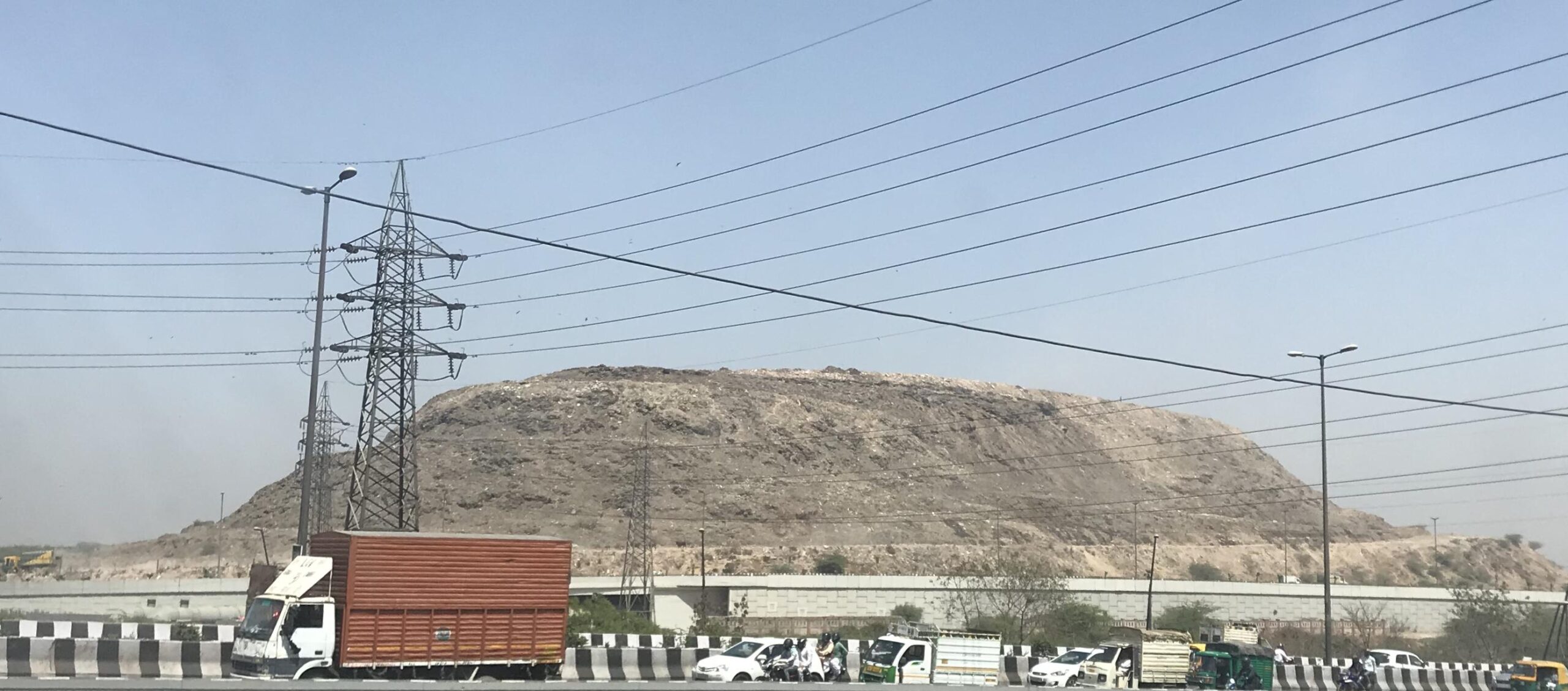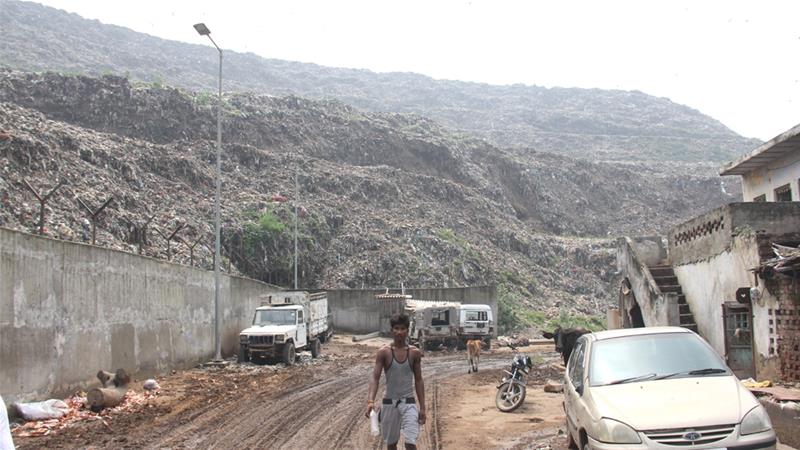Since the Independence of the country, India has faced many issues and challenges in the path of development. One of those challenges which we are facing is the increase of Municipal Solid Waste, which is domestic and industrial waste across the cities and towns. In other words, we can also conclude that rise in domestic and industrial waste is the outcome of rapid urbanization. The actual challenge is not the piles of these solid wastes but is the management of these waste.
Earlier this waste was supposed to either decomposed or reused for any other purpose, but in the present case scenario, the amount of plastic and packaging material’s waste share is increasing rapidly. And all the laws pertaining to the management of these solid waste seem to fail or somewhat useless. Municipal laws are supposed to come up with a prominent solution for this challenge but they are unable to carve out any suitable provision so that effective dealing with this problem of solid waste management.
In cities, one can easily found the dumpsites in the shape of small hills or sometimes they seem to be growing into a potential mountain. This is the most critical aspect of Solid Waste Management where garbage dumping sites near the residential areas need to be managed on a priority basis.
What is Municipal Solid Waste?
In simple words, Municipal Solid Waste is Trash or garbage. Solid waste is unwanted or useless solid materials that were discarded by human activities after utilization. Municipal Solid Waste can be divided in many ways but it is usually categorized into three-way; on the basis of the origin of waste; on the basis of the content of the waste; and hazardous potential of the waste. On the basis of origin, waste can be categorized into the following categories:
- Domestic Waste: Domestic waste usually consists of Kitchen waste and a very less amount of amount Non-Biodegradable (Plastic Waste).
- Industrial Waste: This category of waste compromises of various waste depends upon the type of industry. This waste includes a large number of Plastic contents and other hazardous content. This hazardous content can cause immediate danger when exposed to individuals or the environment. These types of wastes usually don’t constitute under the category of Municipal Solid Waste.
- Commercial & Institutional Waste: This type of waste usually consists of e-waste (electronic waste) such as Desktops, cathode ray tubes, mechanical typewriters, damaged LEDs and LCDs monitors, defective Keyboards and mouses, damaged Motherboard and RAM, etc. Other than e-waste it can also compromise stationery wastes such as used ball and gel pens, sketch pens and used markers, etc.
- Construction Waste: This category of wastes generated at the construction sites of new/old buildings, roads, or any demolition work.
- Biomedical Waste: This category of wastes comes from Hospitals and Medical Institutions. These wastes generated were used in the diagnosis, treatment, immunization, and surgical process.
What is Municipal Solid Waste Management?
So, what will happen if this amount of waste continues to be generated at the same pace? Obviously, we will see piles of hazardous and non-hazardous in our surroundings. That means if we don’t want to see those foul-smelled piles of garbages, then we have to manage and remove these Solid wastes on a priority basis. This process of removal and management is termed as Waste Management, more specifically Solid Waste Management.
The Municipal Solid Waste Management is a combined process in which collection of waste, segregation on the basis of Biodegradable and Non-biodegradable, transportation, treatment, and disposal of these waste with proper regulated manner. Before the management of Waste, the process of waste minimization is to be followed which includes the principle of three R’s, which is Reduce, Reuse, and Recycle.
Mountains of Garbage in Cities

Yes, you have read the right word, Mountain of Garbages. Everyone who is residing in or near cities especially megacities might have gone through the word “Koode ka Pahad”. These hills or mountains in none other than dumping sites of cities that have taken the shape of a hill or mountain in the current scenario. The biggest concern about these piles or mountains of garbage is that on the dumping sites they have reached beyond their capacity.
Actually, the permissible height limit of 20 meters but that law which allows this height is only meant for lawbook and the actual height is way beyond 20 meters. That’s why we are here being to term these dumping sites as hills or mountains. And there is an estimation that more than 10,000 hectares of urban land are locked in these landfills in India.
The waste generation speed of Indian cities is quite high and it was estimated in a range of 200-600 grams of garbage per day. There is amazing data that tells us that only 75-80% of garbages produced by us used to get collected and about 22-25% of waste is processed and treated. This means if you are generating 200 grams of waste per day then only 150-160 grams are supposed to collect and only 44-56 grams of those waste is going to processed and treated.
The problems due to these garbage piles
Locking land and raising mountains is not only the concern that has been created due to these piles of garbage. There are many other concerns that have been arisen due to this Municipal wastes. One of the important concerns is foul smell and groundwater contamination due to the leaching of black liquid oozing from this garbage. This black liquid coming from the waste changes the coarse of soil and also contaminates groundwater which affects the lives of other peoples who are living near those landfill sites.
Another important issue related to these landfill sites is emissions of methane gas. And, when we are saying the emission of methane, then it doesn’t mean the emission only but it means heavy emissions which further contribute to global warming. Yes!! Your daily waste is an addition to global warming. In actuality, Methane is one of the greenhouse gases which absorbs heat and radiation coming from the sun and locks the atmosphere. So ultimately, whatsoever amount of heat entering the atmosphere, it got absorbed by Methane gas and prevent them to reflect back from the earth’s surface.
Other than leaching and emissions of greenhouse gases there are other issues such as the routine eruption of fire in these garbage piles which used to create heavy smokes and foul smell coming from these garbages. There is a concept of creating a low-permeable layer or membrane before creating the landfill sites. New landfill sites created have these liners or low-permeable membrane so that black liquid oozing out from garbage can be stopped from reaching out to groundwater and directly to the soil. However, Landfills sites created earlier than this concept lack these membranes and they are directly contaminating the groundwater and adding to the land pollution.
Laws for Municipal Solid Waste in India
Until 2016, there was a set of rules named Municipal Solid Wastes (Management and Handling) Rules, 2000 was applicable and was being widely used for Municipal Solid Waste (MSW) Management. But in 2016, these set of laws and rules got amended and was replaced by Municipal Solid Waste Management Rules 2016. So we are here going to discuss a few important and striking points related to this set of rules for waste management.
Solid Waste Management Rules, 2016
Earlier, Municipal Solid Waste (Management and Handling) Rules, 2000 were in the act, which was supposed to cover only municipal areas. This means whatever the activity was supposed to do by municipal corporations was only limited to defined municipal areas. This rule was replaced by Municipal Solid Waste Management Rules 2016.
The Municipal Solid Waste Management Rules 2016 now not only covered the municipal areas but also included census towns, notified industrial townships, and urban agglomerations. These rules now aim at the segregation of garbage at their source. This means waste on the basis of their decomposable nature (Biodegradable and Non-Biodegradable). Also, the responsibility of disposing of sanitary and packaging wastes has imposed on the manufacturer. Also, a provision of user fees for collection, disposal, and processing of waste from the mass generator (mass producer of Municipal Wastes) was introduced.
Not only the segregation of waste at the source but it was recommended that waste (if bio-degradable) must be processed, properly treated, and must be disposed of by the means of composting or bio-methanation in the premises at the maximum extent. The only residual waste shall be handed over to the waste collection agency.
These rules also promote the use of compost, conversion of waste into energy, revision of parameters for landfills location, and capacity. The government has also constituted a Central Monitoring Committee under the chairmanship of Secretary, Ministry of Environment and Forest to monitor the overall implementation of the rules.
The Rules for the Safe Treatment of Legacy Waste prescribe bio-remediation and bio-mining in all open dumpsites and existing operational dumpsites in India. Apart from this, Article 51 A (g) of the Constitution of India makes it a fundamental duty of every citizen of India to protect and improve the natural environment including forests, lakes, rivers, and wildlife, and to have compassion for living creatures.

